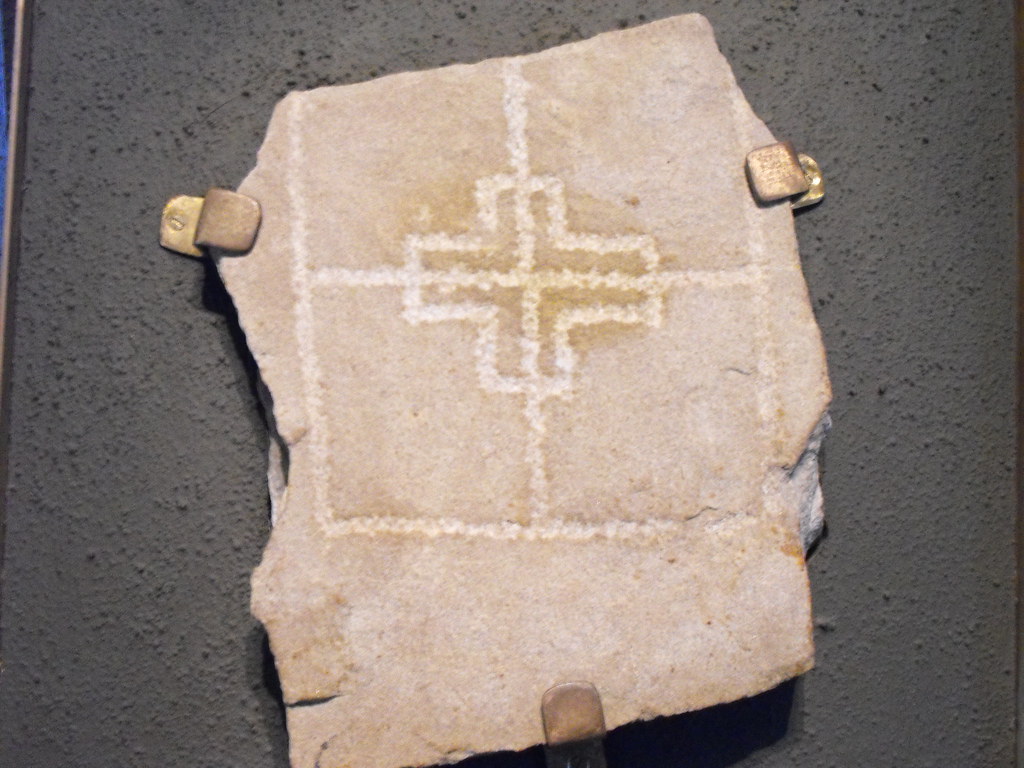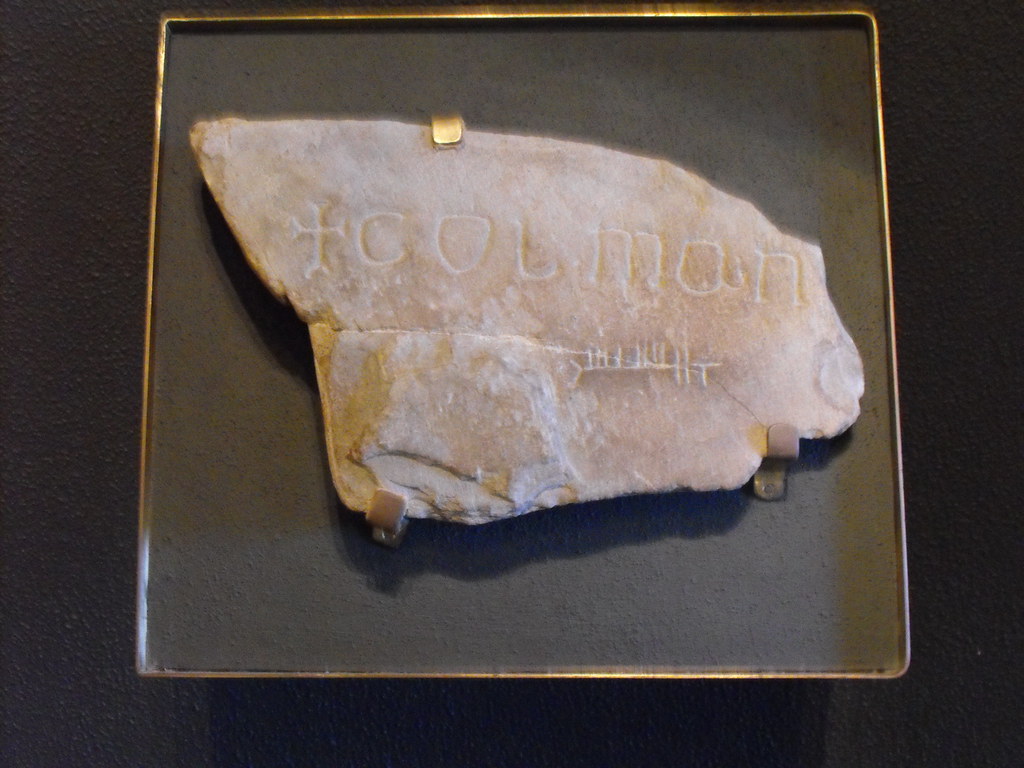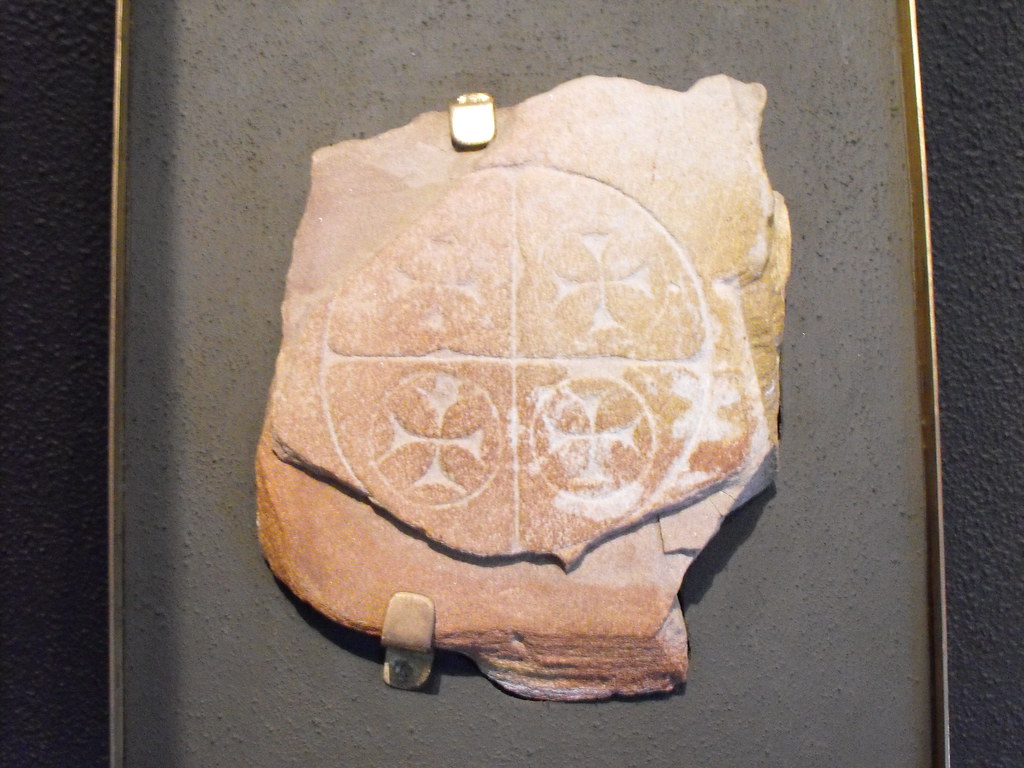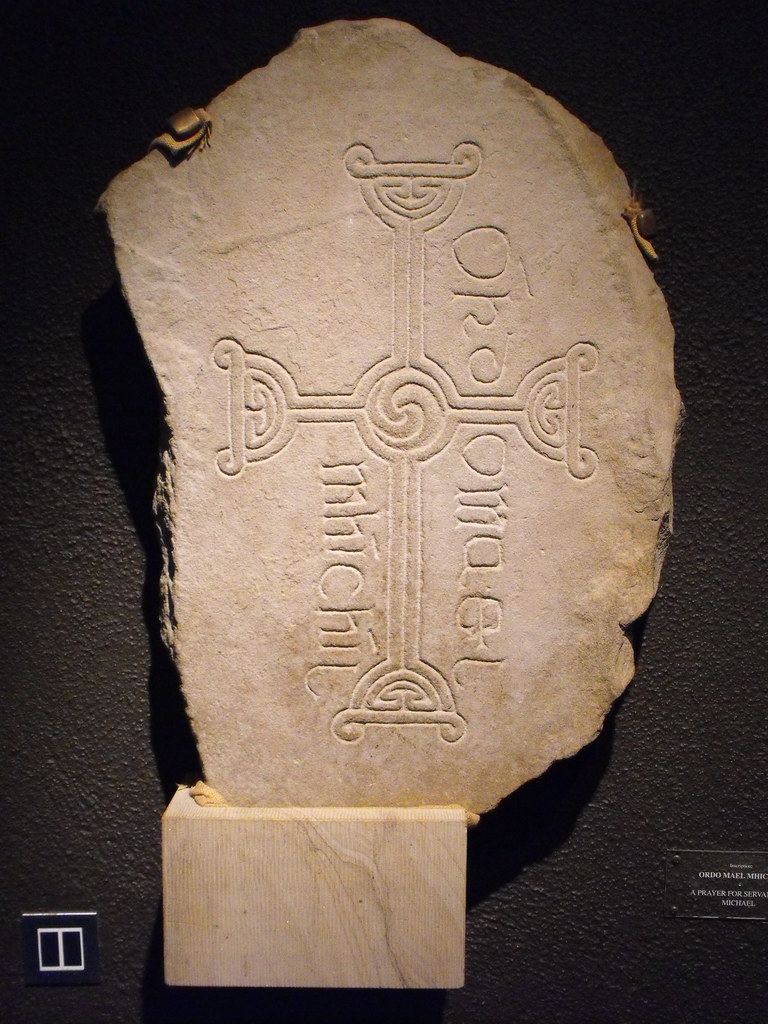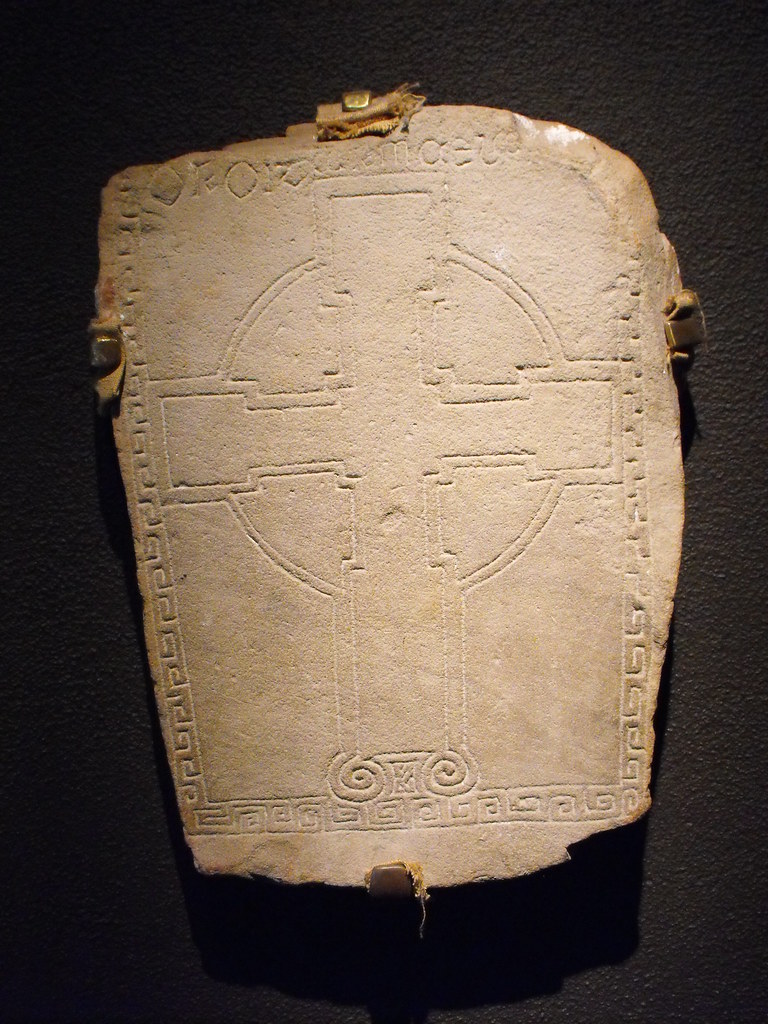Location – In the visitors centre.
Description and History – For me, this is one of the highlights of Clonmacnoise. Like bullaun stones, grave-slabs give us a small window into the life of the early Church in Ireland. While grave-slabs like these were used up into the later-medieval period these represent some of the earliest Christian artwork to be put onto stone in Ireland. The ones on display at Clonmacnoise range in date from the early 8th century to the 12th century and only represent a fraction of those found here which is in the range of 600. Most slabs have a cross inscribed on it and the name of the person being commemorated and sometimes a small prayer. The crosses with a simple cross and name are usually earlier in date while rectangular framed crosses and ringed crosses are usually 8th and 9th century in date and are of a style unique to Clonmacnoise. Latin and Greek cross-slabs are usually 10th century in date. The selection on display shows us how styles and art changed slowly over time. Although these slabs get overlooked because of the high crosses at the site, for me, these are the heart of the site ass you get in touch with the real people who lived and worked there and you get away from Kings and Abbots who dominate the history of this site.
Difficulty – Easy! They are all in the visitors centre.
Back to the Clonmacnoise menu.
Description and History – For me, this is one of the highlights of Clonmacnoise. Like bullaun stones, grave-slabs give us a small window into the life of the early Church in Ireland. While grave-slabs like these were used up into the later-medieval period these represent some of the earliest Christian artwork to be put onto stone in Ireland. The ones on display at Clonmacnoise range in date from the early 8th century to the 12th century and only represent a fraction of those found here which is in the range of 600. Most slabs have a cross inscribed on it and the name of the person being commemorated and sometimes a small prayer. The crosses with a simple cross and name are usually earlier in date while rectangular framed crosses and ringed crosses are usually 8th and 9th century in date and are of a style unique to Clonmacnoise. Latin and Greek cross-slabs are usually 10th century in date. The selection on display shows us how styles and art changed slowly over time. Although these slabs get overlooked because of the high crosses at the site, for me, these are the heart of the site ass you get in touch with the real people who lived and worked there and you get away from Kings and Abbots who dominate the history of this site.
Difficulty – Easy! They are all in the visitors centre.
Back to the Clonmacnoise menu.


